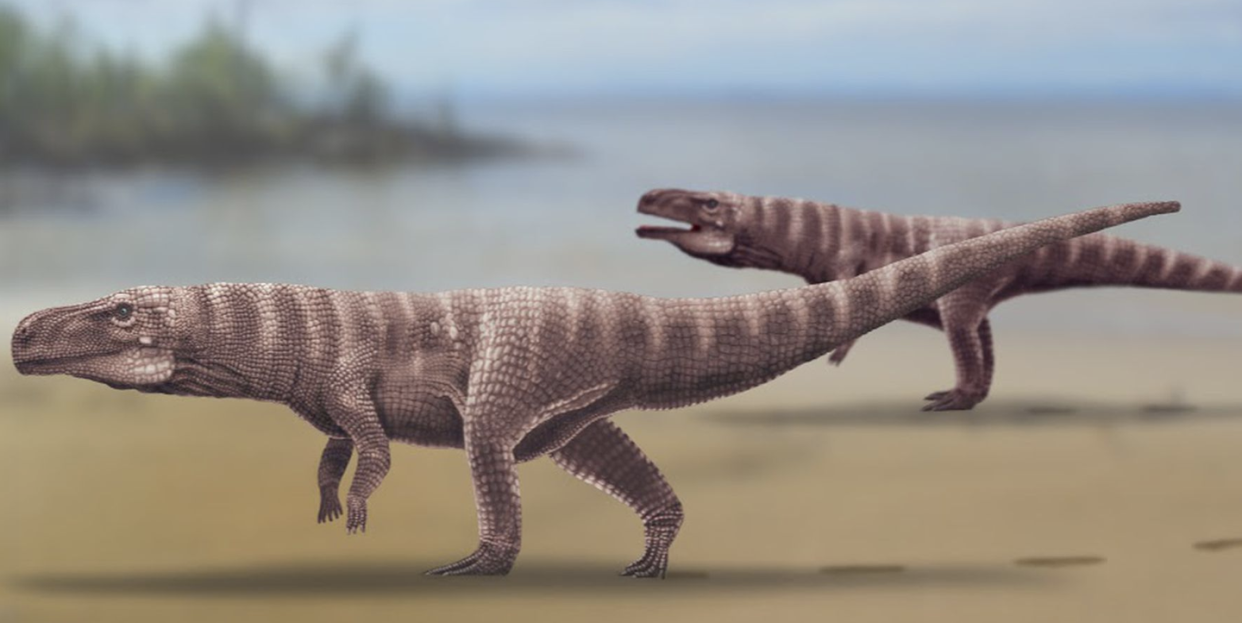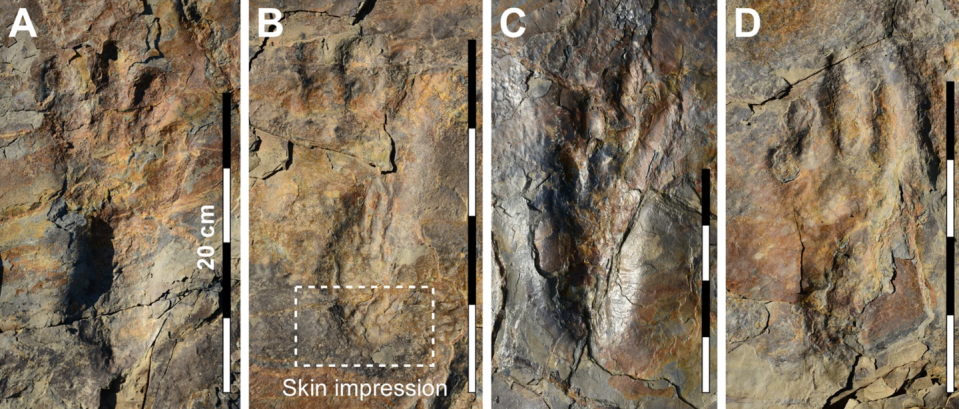Based on Recently Discovered Fossilized Tracks, Prehistoric Crocodiles Might Have Walked on Two Legs

"Hearst Magazines and Yahoo may earn commission or revenue on some items through the links below."
Newly discovered fossilized tracks from South Korea may indicate that prehistoric crocodile ancestors were mainly bipedal walkers.
The finding may also prove that tracks found at a different South Korean site may have been the same crocodylomorph and not a pterosaur as previously believed.
A new paper in Scientific Reports describes crocodylomorph tracks which indicate that crocodile ancestors walked on two legs—not unlike some dinosaurs. The only thing scarier than a crocodile coming after you is a crocodile giving chase on two hind legs.
Researchers analyzed trace fossils of large tracks belonging to Batrachopus from the lower Cretaceous period which have remained incredibly well-preserved in South Korea's Jinju Formation. The fossils depict “narrow-gauge” trackways—manus tracks are noticeably absent—which measure between 7- and 9.5-inches and indicate that the crocodylomorph could reach a body length of approximately 10 feet. The track maker also left behind an imprint of its skin, seen in these fossil photos.

Additionally, researchers say that based on fossil evidence and the lack of manus imprints, it's unlikely that the tracks were “made by quadrupeds that only appear bipedal.” Although the tracks appear to have been made by a terrestrial animal, the researchers don't rule out the possibility that the crocodylomorph had some aquatic aptitude.
According to Martin Lockley, one of the paper co-authors and a professor at the University of Colorado, the tracks—which are between 110-120 million-years-old—reveal a lot about the Jinju formation.
“You can read the entire ecology [of the site],” Lockley says. And he did just that. It was Lockley who identified the tracks when Kyung Soo Kim, the lead paper author, asked him what he thought made them in the first place. There was speculation that fossils were made by pterosaurs walking on land but Lockley knew right away that this wasn't the case.
“I immediately saw that they were of the type known as Batrachopus,” Lockley says.
Lockley's keen eye also shed some light on mysterious tracks also believed to have been made by pterosaurs at Gain-ri, a different South Korean site. It seems that whatever animal made the Gain-ri tracks may have been a smaller Batrachopus specimen and not a pterosaur carefully making its way through mud so as not to end up with muck-covered wings.
The researchers are hoping to find more fossil evidence in the area to prove beyond doubt that these tracks were indeed made by bipedal crocodylomorphs, who developed either fully- or semi-terrestrial gaits.
You Might Also Like

